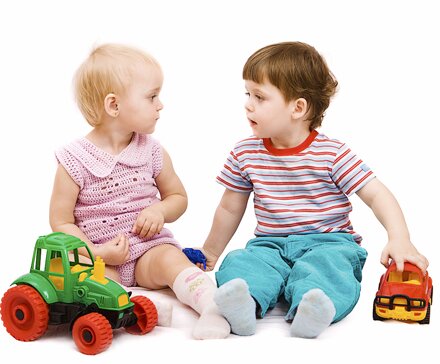Toys for Boys!

My sister and I grew up with an older brother and we thought nothing of spending Saturday afternoons sprawled on the living room carpet, constructing items out of his beloved Lego. His creations were always more ambitious and sophisticated than ours of course – windmills and tractors and mansions with masses of rooms compared with our rather mundane boxlike structures. Occasionally we would ditch the Lego for a session on his Scalextric racing set. We hadn’t a hope of winning, but we certainly enjoyed trying!
It never once occurred to me that I was playing with ‘boy toys’ which is maybe why, when I became mother to four daughters, I happily bought them their own sets of Lego along with other ‘boyish’ toys such as remote control cars, science sets and basketball nets (they had their fair share of dolls, prams and jewellery kits too!).
Like it or not, the society we live in stereotypes children according to their gender. Manufacturers influence their choice of toys with labels identifying items such as dolls and tea sets as ‘girl toys’ in their pretty pink packaging, and cars and construction sets as ‘boy toys’ in their predominantly blue wrappers.
There is evidence to suggest that girls and boys do naturally select different types of toys. Experiments conducted on primates concluded that male monkeys were drawn to boy-toys like cars whilst female monkeys preferred girl-toys like dolls.
There are various explanations about why boys and girls have different toy preferences. One theory suggests it is due to testosterone levels, whilst another attributes it to the way the brains are ‘differently-wired’, and there’s no doubt that nurture and socialisation also play a part. Regardless of the reason, the consensus of opinion is that if children are offered a wide range of toys and experiences, they will develop into more rounded individuals with an expanded range of thinking and skills.
Just as playing with girl-toys like dolls and tea sets fosters the development of verbal and social skills that might be useful to the male population, playing with boy-toys like cars can help girls with the acquisition of spatial skills. Other ‘boy-toys’ like science sets, Lego, Meccano and K’nex help develop STEM (science, technology, engineering and maths) skills of which there is currently a shortage in the UK workforce – and why shouldn’t girls develop these just as much as their male counterparts?!
Some may argue – and I’m probably one of them – that at the end of the day whether male or female, children will be children and will naturally choose the toys that interest them the most. The important thing is to at least give them that choice!






